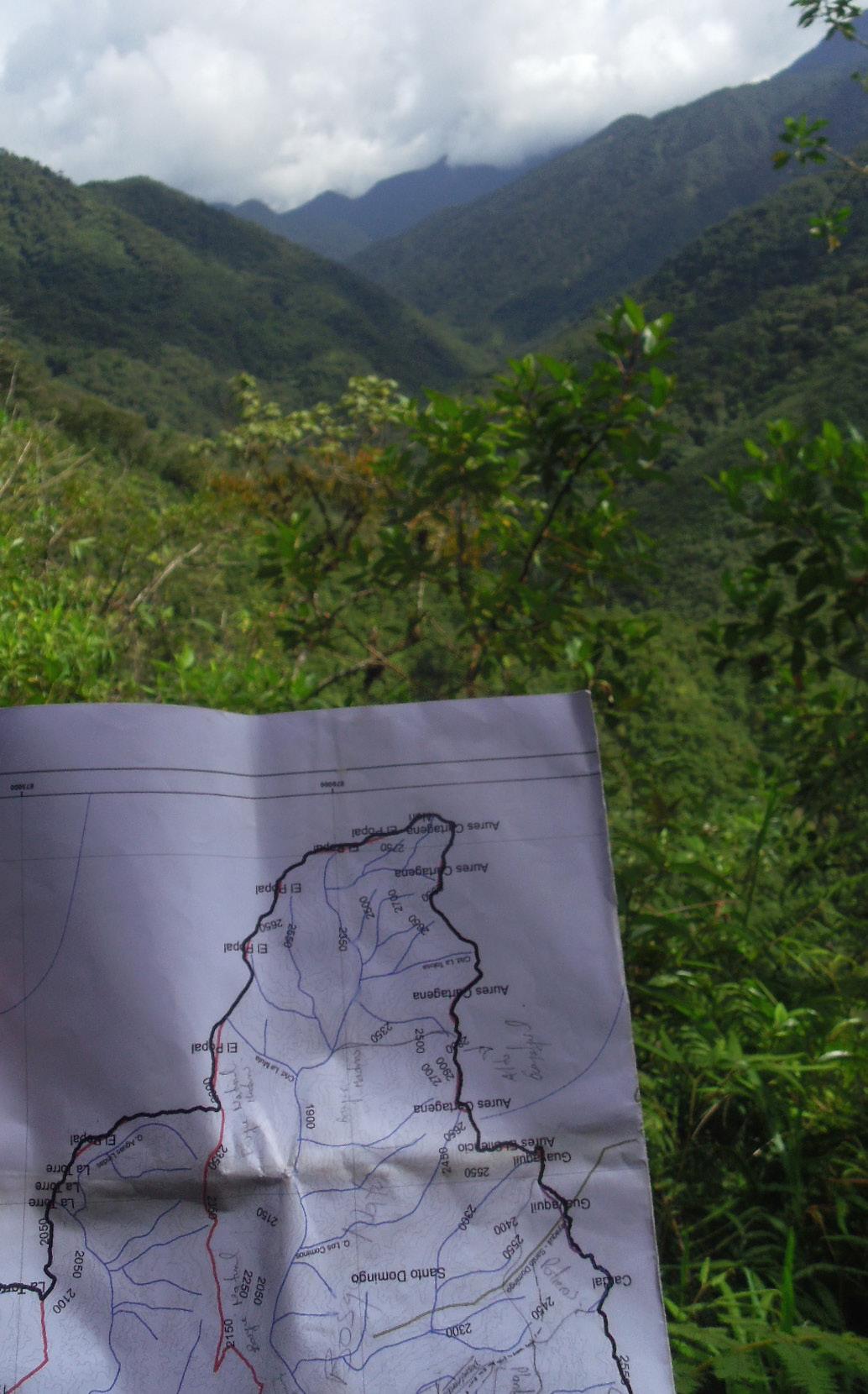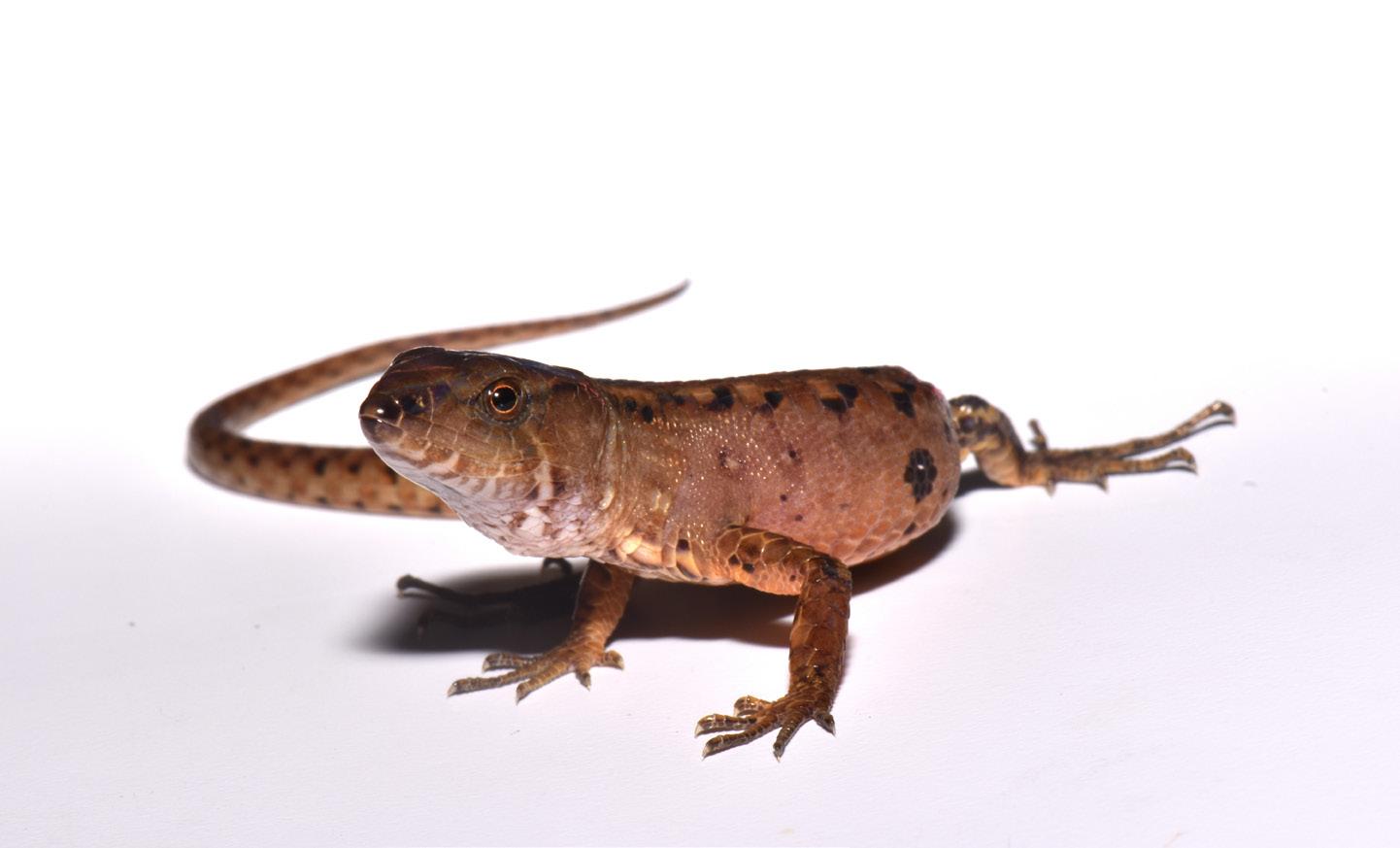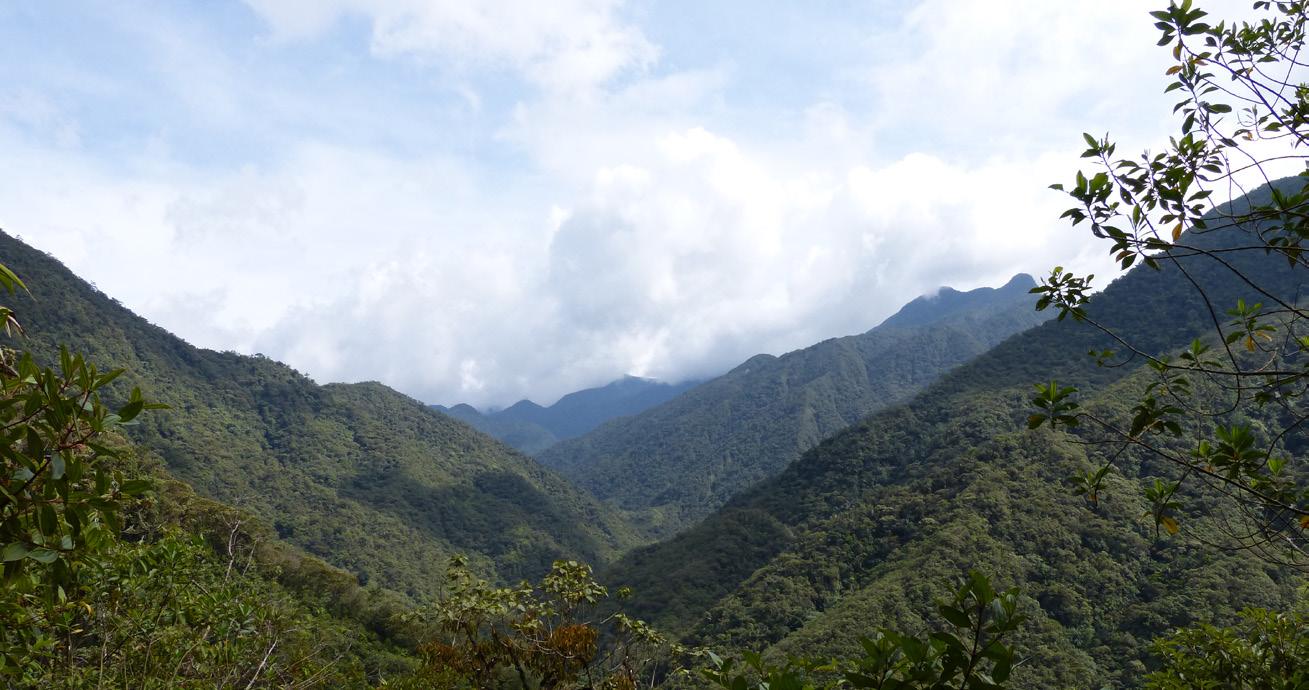
1 minute read
Colombia
1 MANAGEMENT PLAN IN PROCESS
1 INDIGENOUS NATION SUPPORTED
Advertisement

Cañones Río Melcocho and Santo Domingo Protected Forest Reserve
GUESS THE GENUS
You supported the discovery of a new genus of lizard.
A new genus of lizard (called Magdalenasaura) was recently discovered in Colombia by a group of researchers from the Herpetology Laboratory of the University of Antioquia. One of the individuals of this new genus was collected in Cañones Río Melcocho and Santo Domingo Protected Forest Reserve, an area in the Colombian Andes previously created with your support!
The new genus becomes part of the 49 known members of the gymnophthalmids family — scaly reptiles of small size and short limbs, which have the ability to see with their eyes closed. Members of this family typically live in tropical dry forests.

The recently discovered Magdalenasaura adercum species by Juan M. Daza.
Finding a new genus is particularly exciting, as there may be many unknown species which belong to Magdalenasaura. The biologists have already discovered two new species belonging to the genus: Magdalenasaura adercum and Magdalenasaura leurosquama.
These recent discoveries show the power of your generosity! There may be many new species yet to be discovered in the wild places that you protect.
Studying Connectivity
Nature and Culture and partners like the Humboldt Institute of Colombia conducted critical research on protected areas connectivity. The results of our study Connectivity of Protected Areas: Effect of Human Pressure and Subnational Contributions in the Ecoregions of Tropical Andean Countries were published in 2020!
Nature and Culture and partners constructed a protected areas database for Tropical Andean Countries (TAC - Colombia, Bolivia, Ecuador, Peru, and Venezuela) and evaluated TAC’s ecoregions’ representation and connectivity. We found that just 27% of ecoregions in the TAC have met the international goal of achieving 17% protected and connected lands.
Our findings highlight the urgent need to continue creating protected areas and establish connectivity. Findings have also influenced national discussions about protected areas in Colombia, Ecuador, and Peru.

Cañones Río Melcocho and Santo Domingo Protected Forest Reserve.

